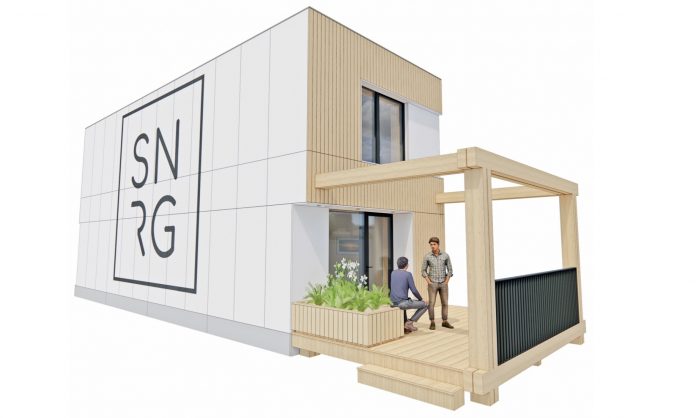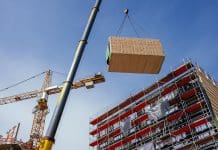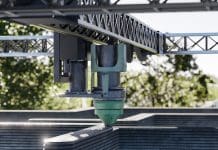Experts exploring the mainstream use of homegrown timber in the construction sector have secured funding for the next phase of a demonstrator project which will see the first two-storey modular home manufactured during COP26
The Transforming Timber initiative – led by Construction Scotland Innovation Centre (CSIC) with support from Edinburgh Napier University, ECOSystems Technologies, the University of Edinburgh, and SNRG – has been awarded £1.45m of funding from Innovate UK’s Small Business Research Initiative (SBRI).
It will create a fully functional prototype that highlights the business case for using Scottish timber resources in future building projects.
The commercialisation of homegrown timber could prove a major boost for the Scottish economy, while also making a significant impact on the environmental footprint of construction.
The success of the demonstrator project and prototype unit – which is being built with a mix of cross-laminated timber, glue-laminated timber and nail laminated timber components – could lead to the development of the UK’s first mass-manufacturing facility for homegrown natural resources.
The two-storey, two-bedroom timber demonstrator home will feature as part of the After the Pandemic showcase which is set to take shape on the banks of the River Clyde – close to the main COP26 venues – and will be displayed throughout the month of November.
The team will also produce a virtual reality walk-through and digital twin of the demonstrator unit to capture essential information such as structural, thermal, acoustic and fire performance data.
A place to showcase opportunity
Sam Hart, innovation manager at CSIC, said: “There is a huge opportunity for the greater use of renewable Scottish timber in UK construction and research has proven that with the right treatment and processing, it can be used for a wide range of structural elements.
“The construction of a functioning prototype will allow us to take this research one step further, showcasing the strength of the opportunity and the associated environmental benefits, while enabling us to monitor and test the performance and behaviour of the building in a real-world environment, outside of the factory.”
Professor Robert Hairstans, head of the Centre for Offsite Construction and Innovative Structures at Edinburgh Napier University, said: “Biogenic offsite manufacturing is an industrialised form of construction that utilises naturally renewable resources with an emphasis on timber, factory, and digital approaches.
“This project will help accelerate the adoption of these approaches, supporting the utilisation of homegrown timber in line with the declared climate crisis and corresponding necessity to achieve net zero carbon adopting a circular approach.”














